
26 March 2025
In today’s policing landscape, integrating new technologies isn’t just about upgrading systems. It’s a complex process that involves synchronising culture, technology, policy, and wider governmental pressures, at an ever-increasing pace.
Here we outline the top 10 challenges and interdependencies involved in selecting and adopting from the plethora of technological developments and then embedding multiple new technologies in frontline UK policing, highlighting the multifaceted nature of this undertaking. This high level outline is just a taste of the full paper by Keren Pope, a BMT Management Consultant, who interviewed officers and staff at various levels within policing, from different forces, and researched government-published documents; as well as giving her own, first-hand experience as a former, senior law enforcer So, if you would like to know more and how to mitigate these challenges, please download the full paper.
Government procurement often lags behind in adopting cutting-edge technology compared to the private sector and even criminality. Bridging this gap requires extensive funding, collaboration with industry leaders, and agility across policing and legislative landscapes. Financial constraints mean only immediate problems can be addressed, leading to local workarounds that impact further development. Joint initiatives with technology firms aim to enhance policing capabilities, develop nationwide solutions, and ensure uniformity across the country.


Achieving interoperability in modern policing is challenging due to local and regional pressures. There are 43 territorial forces responsible for local policing across England and Wales, plus Police Scotland, with national, regional, and specialised police forces operating alongside. Each force is a legal entity, often using different systems, making seamless data sharing difficult. Balancing local needs with national requirements complicates this further, as local forces may resist central control, leading to discrepancies in technology adoption. Establishing a unified framework for technology standards and encouraging collaboration between different bodies can help mitigate these issues.
Public perception and scrutiny are crucial in adopting new technologies in policing, due to pressure of investing public spending to increase productivity and detect and reduce crime. Perceiving policing as a single ‘Police Force’ and therefore expecting identical standards can lead to confusion and mistrust due to internal differences. The implementation of new technologies must receive public buy-in; transparent communication and public engagement are essential to build trust.
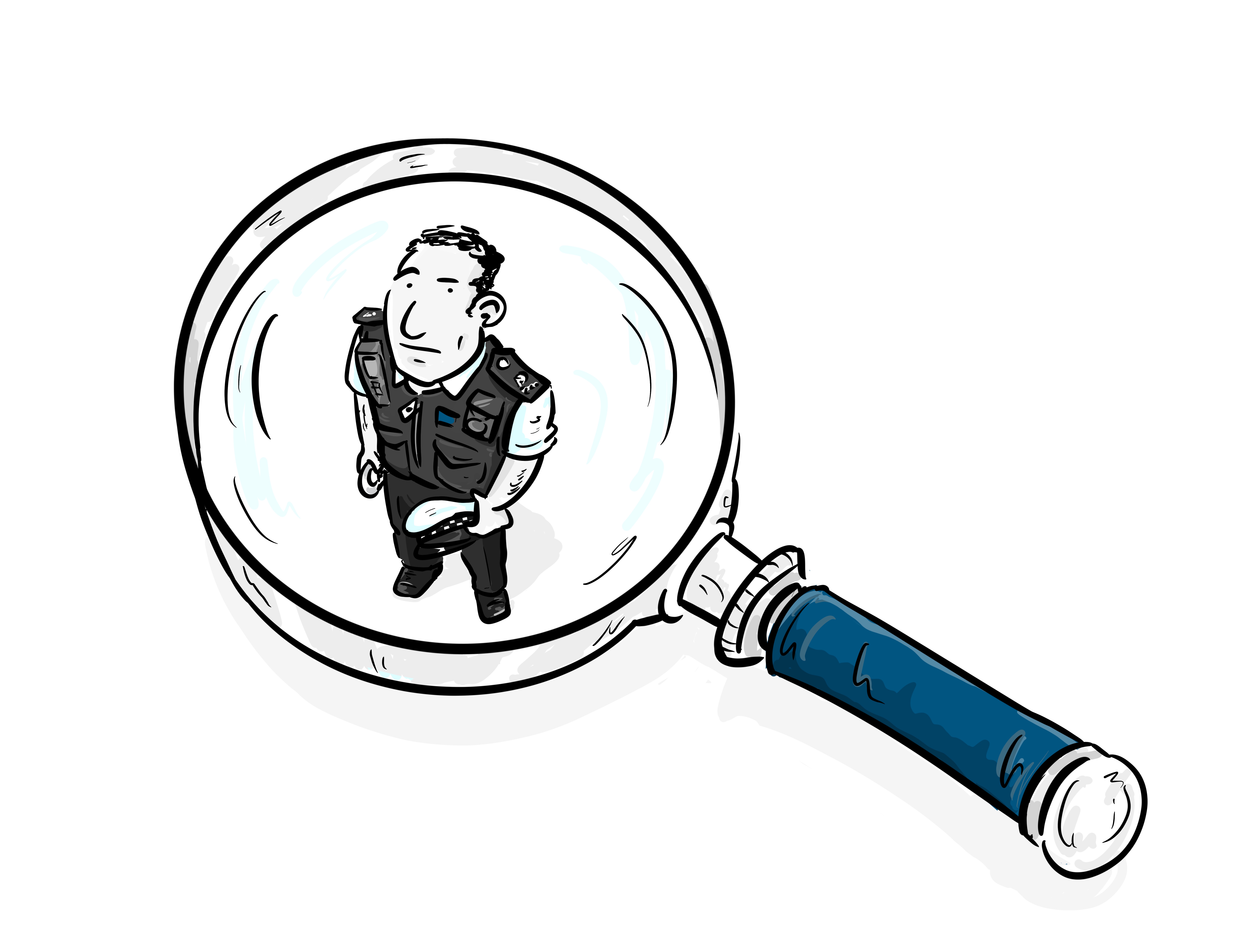
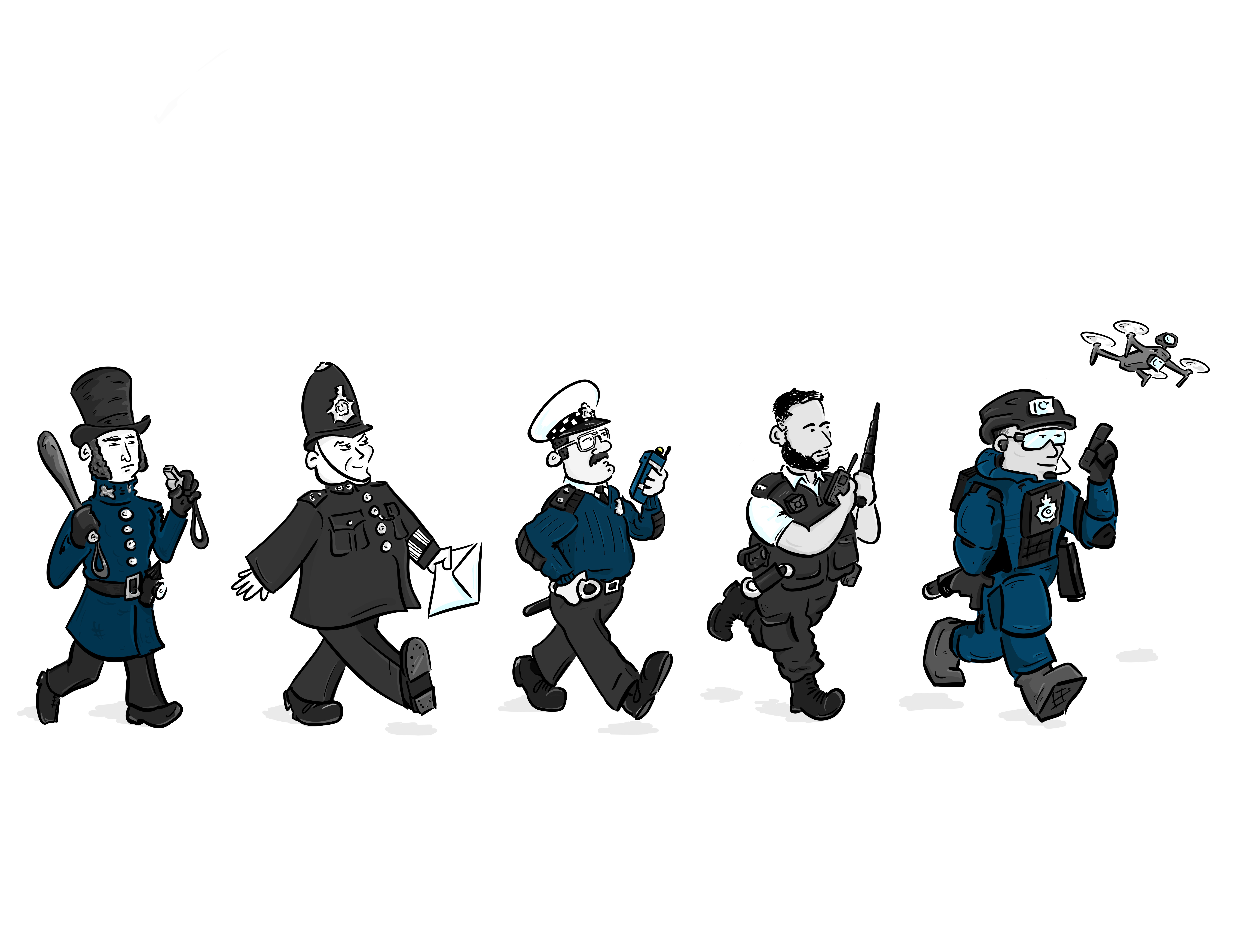
Internal culture within police forces will influence the adoption of new technologies. Frontline policing staff often have mixed reactions to new technology, with some embracing tools like body-worn videos, while others are more cautious due to perceived lack of training and poor usability. Middle management are often more committed to adopting new technologies but face budget and staffing constraints. Senior management are enthusiastic about digital transformation but tend to consider the reputational damage resulting from failure. Building trust through transparent communication and successful technology adoption is crucial for cultural change.
Engaging all relevant stakeholders is crucial for successful technology implementation. Mapping diverse interests, engaging with stakeholders early on, and considering feedback ensures legitimacy and public trust. Early consultations with stakeholders can also help navigate legal and ethical concerns of a new technology. National collaboration aligns new technologies with national policies and standards, improving implementation and service delivery.
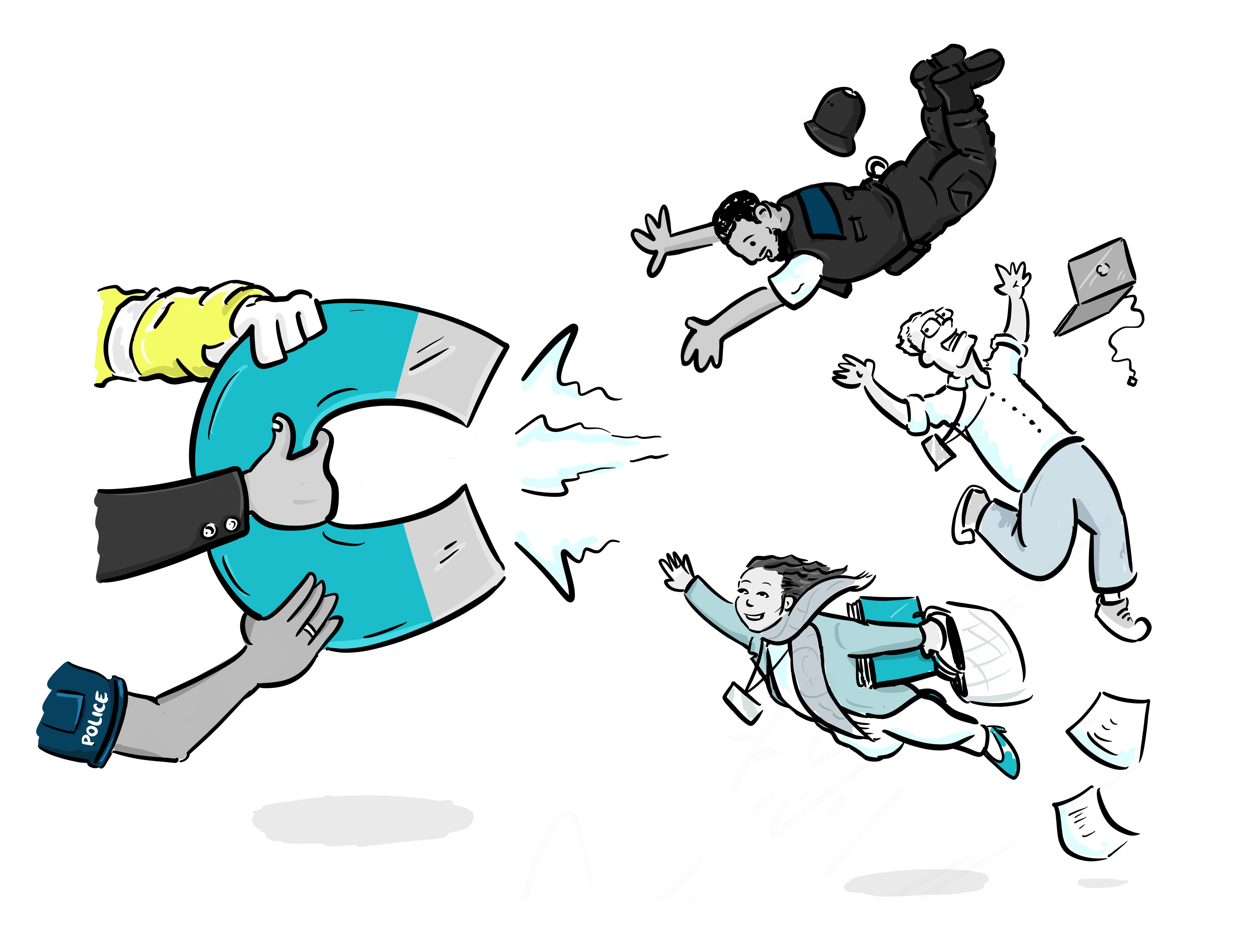

Highlighting positive outcomes from new technology can foster support. Without perceiving the benefits of new technological advancements, it is challenging for the public and policing staff to trust and accept these tools. Lack of benefit realisation can also result in avoidance or local work-arounds, leading to inconsistency and inefficiency. Effective communication of benefits to both the general public and specific stakeholders is critical for realising the benefits, especially in proving return on investment in the current financial landscape.
Understanding who benefits from technological changes is essential for targeted implementation. Identifying and engaging key stakeholders throughout the development of new technologies ensures the solutions are utilised properly and meet specific end-user needs. Addressing specific needs and communicating benefits effectively is crucial. Costs and local adaptations should not override primary goals, ensuring efficiency and acceptance among frontline officers, IT specialists, the public, and advisory groups.


Technological advancements offer both opportunities and challenges in policing, impacting operational efficiency, legal frameworks, and public trust. Issues include outdated or obsolete systems, costly upgrades, and systems that are complex and not intuitive, leading to user frustration. Rapid changes in crime landscapes, such as the rise of digital crime, also necessitate new skills and training of frontline staff. Addressing these challenges involves ensuring interoperability, investing in user training, and meeting legislative requirements.
Both initial investment and the maintenance of new technology is costly. Financial and resource constraints in the public sector paired with procurement difficulties, such as long-standing vendor contracts and procurement regulations, can impact the successful implementation of new technologies, necessitating prioritisation, effective allocation and affordable solutions.

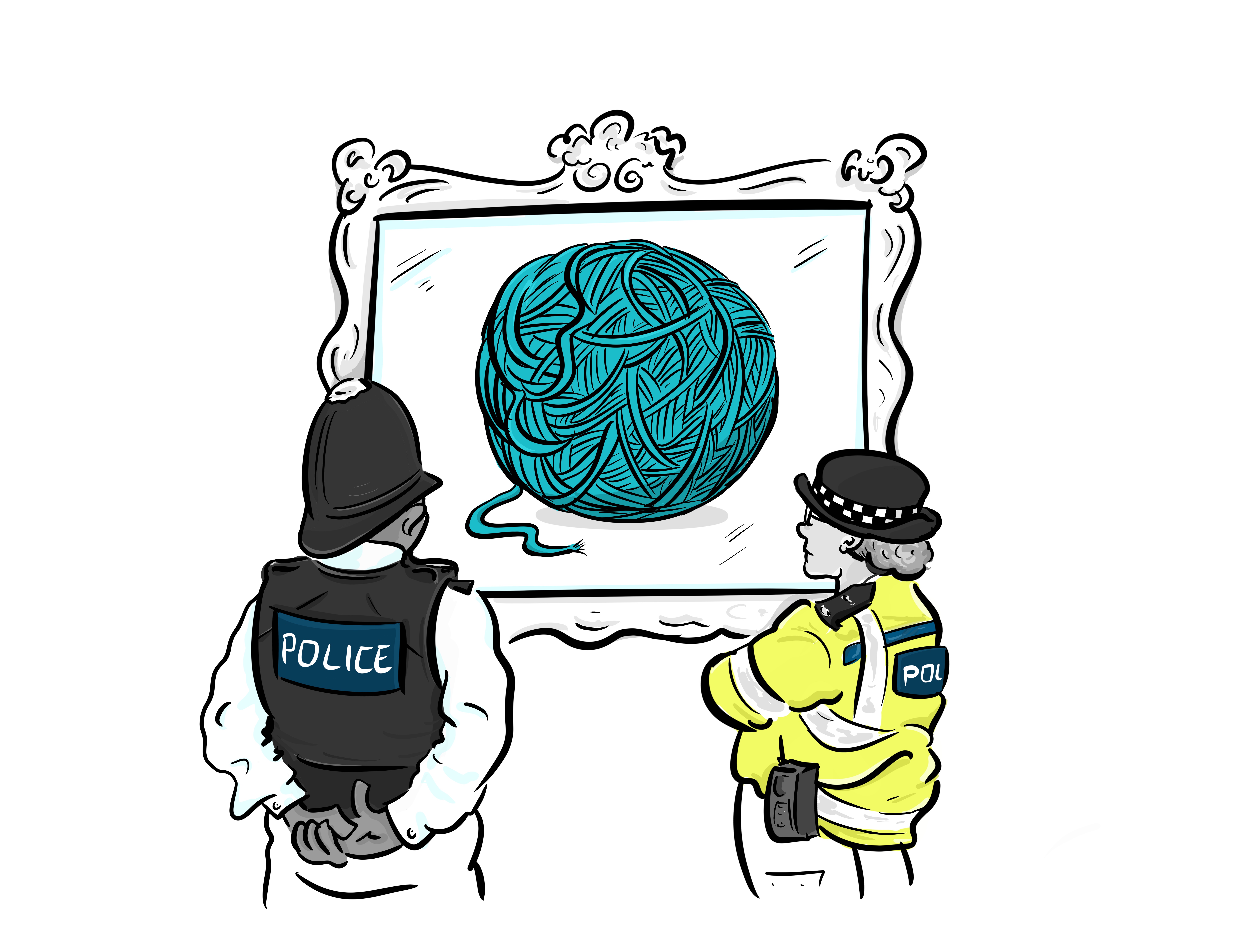
Policing involves navigating technical, societal, political, legal and economic complexities. Integrating new systems requires balancing diverse needs and legal frameworks, whilst being agile and up-to-date to meet the changing needs and avoid inconsistency. Addressing these challenges demands a holistic approach, considering interconnected factors and fostering national working groups for a comprehensive view of requirements and differences.
Synchronising culture and technology in frontline policing requires understanding and managing interconnected challenges. By considering these complexities holistically, effective technology adoption can enhance efficiency, effectiveness, and public trust. We have a strong history of supporting these transformation activities and has been instrumental in addressing some of these challenges across government sectors.
This is just the high level outline of the 10 challenges, if you would like to know more and how to mitigate then please follow the link below to download the full paper.

Keren is an accomplished managing consultant with over twenty years of expertise in senior law enforcement and business transformation roles. Renowned for her strategic planning, problem-solving, and stakeholder engagement, Keren excels in aligning initiatives with corporate missions to drive organisational success. From 2021 to 2023, as the Detective Chief Inspector for the Eastern Region Special Operations Unit (ERSOU), Keren led the Government Counter Terrorism Prevention strategy, managing diverse, high-performing teams and collaborating with over 100 partner organisations. Her transformative leadership significantly enhanced efficiency and reduced costs, garnering national recognition.
Keren is also committed to advancing professional development, particularly through initiatives that support career progression for women in various organisations, including law enforcement via leadership and mentoring programmes. Her impact extends beyond tactical operations to strategic improvements and fostering an inclusive workplace culture. Keren's broad role spectrum, combined with her robust project management skills, underscores her ability to drive substantial and sustainable organisational change.
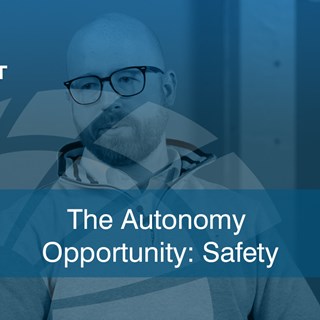
N/A
Get ready to dive deep into maritime autonomy as we bring you technical experts, insightful opinions, and unmissable discussions.

Jake Rigby
We explore the core elements of the support framework required to ensure Persistent Operational Deployable Systems (PODS) can thrive.

N/A
BMT papers which explore the latest insights on the future of maritime autonomy and the safety of autonomous vessels.

N/A
This paper outlines what we mean by complex projects, Systems Thinking, emergent properties and benefits management, and proposes the benefits of combining these to aid successful project delivery.